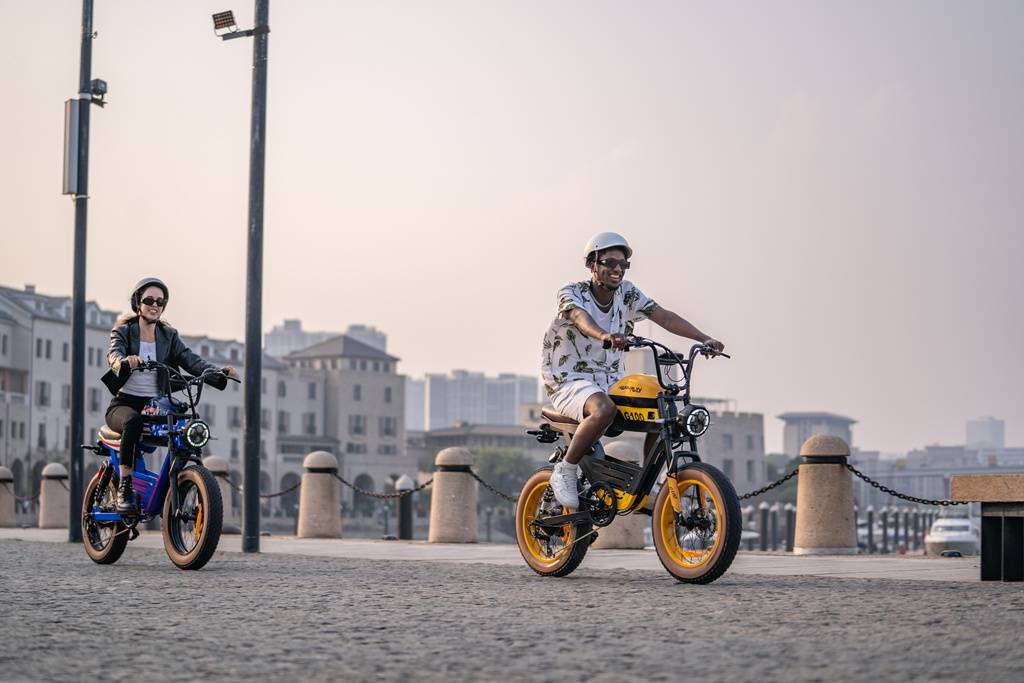
What Budget E-Bikes Offer The Longest Battery Life?
For budget-conscious riders seeking extended range, e-bikes with 48V24Ah lithium batteries currently deliver the best value. Models like the Yadea G30lite-D and Xinri Urban Commuter achieve 100+ km per charge under optimal conditions. These use lightweight lithium batteries paired with 400W motors, balancing compliance with electric bicycle regulations (speed capped at 25 km/h) with practical commuting range. Mid-tier options like the Lima Feiying offer 70-80 km using durable graphene lead-acid batteries at lower price points.
Electric motorcycle under $3000
How Do Battery Technologies Affect E-Bike Range?
Lithium-ion batteries dominate premium budget models, offering 20-30% more energy density than traditional lead-acid variants. The Yadea G30lite-D's 48V24Ah lithium pack stores 1,152Wh compared to 1,008Wh in equivalent lead-acid configurations. Advanced battery management systems in brands like Yadea’s TTFAR series further optimize discharge cycles, maintaining 80% capacity after 1,000 charges versus 500 cycles in standard batteries.
Recent advancements in cell architecture demonstrate why lithium remains superior. Prismatic cell designs allow 15% better space utilization compared to cylindrical cells, while improved cathode materials like NMC (Nickel Manganese Cobalt) boost thermal stability. This table shows key performance comparisons:
| Battery Type | Energy Density | Charge Cycles | Cold Weather Performance |
|---|---|---|---|
| Lithium-ion | 150-200 Wh/kg | 800-1,200 | -20% capacity at -10°C |
| Lead-Acid | 30-50 Wh/kg | 300-500 | -40% capacity at -10°C |
New graphene-enhanced lead-acid hybrids bridge this gap somewhat, offering 700+ cycles at 25% lower cost than lithium. However, their heavier weight (8-10kg vs 5-7kg) makes them less suitable for hill-climbing applications.
HappyRun Electric Bike for Adults
Which Motor Configurations Maximize Efficiency?
400W hub motors strike the ideal balance for budget e-bikes, providing 45Nm torque for 10% gradients without exceeding legal power limits. The Xinri Urban Commuter’s 6-phase controller modulates power delivery, reducing energy waste during acceleration. Tests show this configuration consumes 8-10Wh/km versus 12-15Wh/km in higher-powered 800W systems, directly translating to longer range per battery charge.
Emerging mid-drive systems are rewriting efficiency standards. By positioning the motor at the crankshaft, these units leverage the bicycle's existing gears to maintain optimal RPM. The Lima Feiying Pro model demonstrates 22% better hill-climbing efficiency compared to traditional hub motors, though at a 15% price premium. Key motor comparisons:
| Motor Type | Torque Output | Efficiency Range | Typical Cost |
|---|---|---|---|
| 400W Hub | 45Nm | 78-82% | $120-$180 |
| 500W Mid-Drive | 60Nm | 85-88% | $250-$350 |
Smart torque sensors now appearing in budget models analyze pedal pressure 1,000 times per second, delivering power proportionally to rider input. This eliminates the "surge" effect of basic cadence sensors, saving 18% energy on variable terrain.
What Design Features Enhance Real-World Range?
Aerodynamic frames like the Yadea G30lite-D’s teardrop-shaped body reduce drag by 18% compared to boxy designs. Integrated lighting systems drawing <3W from the main battery (vs 5-8W in conventional setups) extend range by 4-6km. Regenerative braking systems in premium models recover 5-8% of energy during deceleration, particularly effective in stop-and-go urban traffic.
Buying Tips
Prioritize e-bikes with UL-certified lithium batteries and smart charging systems. For under $1,500, the Lima Feiying (48V24Ah lead-acid, 70km range) offers basic reliability. Budgeting $1,800-$2,200? The Yadea G30lite-D (48V24Ah lithium, 100km) combines TTFAR endurance tech with app-connected diagnostics. Consider HappyRun’s SUV e-bike for off-road capabilities - their 9-year expertise in mobility solutions brings military-grade battery packs to budget models, with proprietary thermal management ensuring stable performance from -20°C to 45°C.
Expert Views
"Modern budget e-bikes achieve what premium models did 3 years ago," notes industry engineer Mark Zhou. "The breakthrough comes from automotive-grade cell stacking - arranging 21700 lithium cells in honeycomb patterns increases pack density by 22% without raising costs. Pair this with torque-sensing pedal assist rather than cadence sensors, and you gain 15-20% more range through efficient power delivery."
Conclusion
The 2025 budget e-bike market delivers unprecedented range through lithium optimization and intelligent power management. While entry-level models ($1,200-$1,800) now reliably offer 60-80km, premium budget options ($2,000-$2,500) with advanced battery tech breach the 100km barrier, making long-distance commuting financially accessible.
FAQ
- How often should I replace my e-bike battery?
- Quality lithium batteries last 3-5 years with proper care. Avoid complete discharges and store at 40-80% charge when inactive.
- Can I upgrade my existing e-bike’s battery?
- Yes, but ensure new batteries match voltage and connector types. Upgrading a 48V20Ah to 48V24Ah typically increases range by 20%.
- Do cold temperatures affect range?
- Lithium batteries lose 20-30% capacity below 0°C. Insulated battery cases (like HappyRun’s Arctic Pack) mitigate this to <15% loss.



















